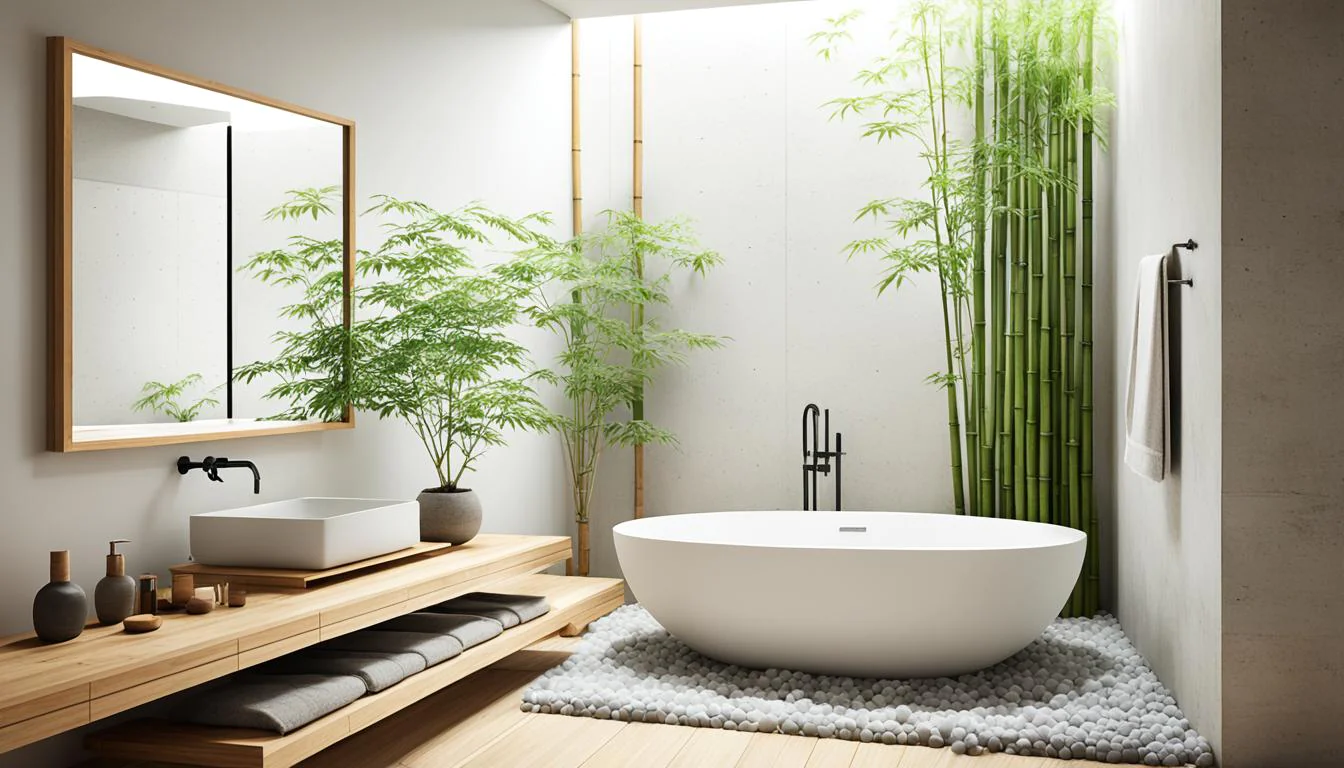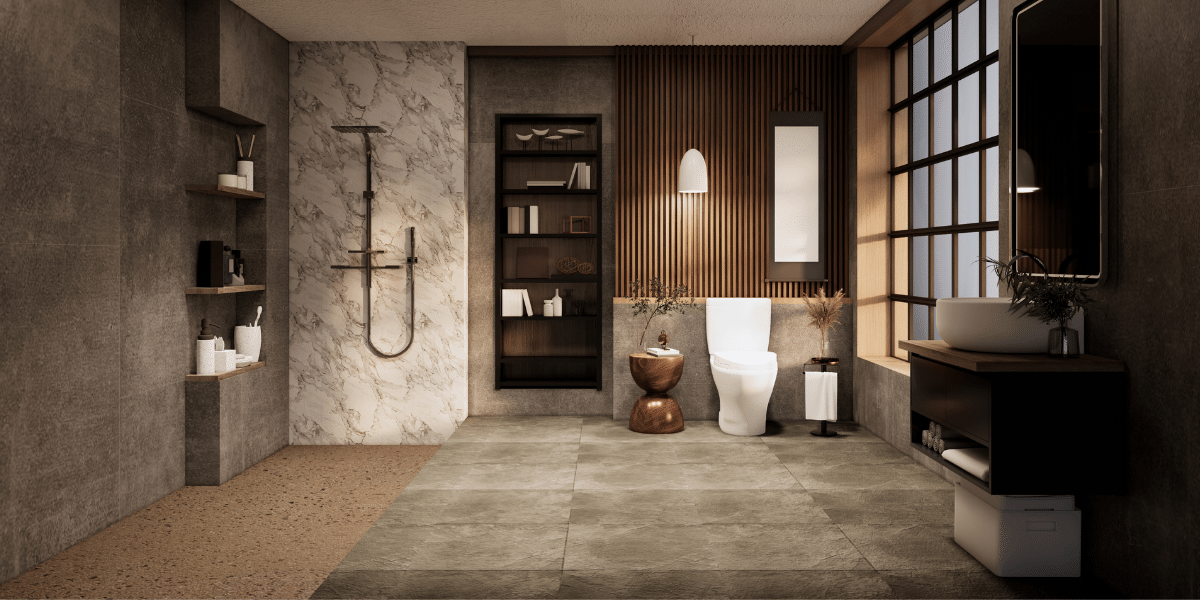Introduction to Japanese Bathroom Decor
Have you ever stepped into a bathroom and felt as if you were transported to a serene Japanese spa? The calming aesthetics, minimalist approach, and thoughtful designs can transform your bathroom into a tranquil retreat. Drawing from my personal experiences of visiting beautiful Japanese baths (onsen) and homes, this article explores the key elements of Japanese bathroom decor that can elevate any space.
The Essence of Japanese Design
Japanese design is synonymous with simplicity, elegance, and an innate connection to nature. The philosophy of ‘Wabi-Sabi,’ which embraces imperfection and the beauty of nature, heavily influences Japanese decor. In a bathroom, this translates to a calm oasis, perfect for relaxation and rejuvenation. Let’s explore the fundamental aspects that define Japanese bathroom decor.
Key Characteristics
- Minimalism: Clean lines, uncluttered spaces, and a focus on functionality.
- Natural Materials: Using wood, stone, and bamboo to create a warm, organic feel.
- Connection to Nature: Incorporating elements like plants and natural light.
- Subtle Colors: Soft, neutral palettes that promote peace and tranquility.
- Innovative Use of Space: Efficient layouts that maximize comfort.
Designing Your Japanese Bathroom
Step 1: Planning the Layout
The layout of your bathroom is crucial in achieving a Japanese-inspired design. Take into account your existing space and how you can best utilize it to create an open, airy environment. Consider the following:
- Separate areas for wet and dry sections.
- A layout that allows for natural light and airflow.
- Incorporating built-in storage solutions to keep the space uncluttered.
Comparison of Layouts
| Layout Type | Pros | Cons |
|---|---|---|
| Open Layout | Enhanced light flow, spacious feel | Less privacy |
| Wet/Dry Split | Functional separation, easier maintenance | Requires more space |
| Compact Design | Space-saving, efficient | Limited storage options |
Choosing the Right Materials
Natural and Sustainable Options
To capture the essence of Japanese design, opt for materials that are both natural and sustainable. Here are some ideas for various elements in your bathroom:
- Wood: Consider bamboo or cedar for cabinetry and accents. These materials are not only aesthetically pleasing but also have natural resistance to moisture.
- Stone: Use slate or river stones for flooring or accent walls to bring a piece of nature indoors.
- Bamboo: Ideal for towels, mats, and even shower curtains, providing a fresh and earthy touch.

Pros and Cons of Common Materials
| Material | Pros | Cons |
|---|---|---|
| Wood | Warmth, durability | Requires maintenance |
| Stone | Natural beauty, unique textures | Heavy, may require sealing |
| Bamboo | Eco-friendly, lightweight | Less durable than hardwood |
Color Palette for Japanese Bathrooms
A calming color palette is essential for achieving the desired ambiance. Japanese bathrooms typically feature soft, neutral colors, inspired by nature. Here are some ideas:
- Earthy tones like beige, taupe, and soft gray.
- Accents of muted green or soft blue to reflect nature.
- Bright whites to create a clean, fresh look.

Color Pairing Guide
| Main Color | Complementary Colors |
|---|---|
| Beige | Soft Green, Light Brown |
| Gray | White, Navy Blue |
| Soft Blue | Gray, Cream |
Essential Bathroom Fixtures
Bathtubs and Showers
When it comes to bathing in a Japanese bathroom, the choice of bathtub is paramount. Traditional Japanese soaking tubs, known as ofuro, are typically deeper and made of wood, allowing for a relaxing experience. Consider the following options:
- Wooden Ofuro: Perfect for those looking to create an authentic experience.
- Freestanding Soaking Tubs: Available in various materials, these tubs can serve as a stunning centerpiece.
- Walk-In Showers: Emphasize minimalism and utilize glass walls to create an open feel.

Showers vs. Bathtubs
| Feature | Bathtub | Shower |
|---|---|---|
| Relaxation | High | Medium |
| Space Required | More | Less |
| Water Usage | Higher | Lower |
Decorative Elements
To truly embody Japanese design in your bathroom, pay attention to decorative elements. Here are some essentials:
Lighting
Consider ambient lighting to create a soft, inviting atmosphere. Paper lanterns or LED fixtures can provide a warm glow while adding to the aesthetic.

Accessories
- Natural Textiles: Use linen or cotton towels in soft shades.
- Potted Plants: Incorporate greenery such as bamboo or peace lilies for a fresh feel.
- Artisan Ceramics: Add handcrafted soap dishes and bowls for unique focal points.
Storage Solutions
Built-in storage is key to maintaining a clutter-free environment. Consider installing cabinetry that blends seamlessly with the walls or using open shelving made of natural materials.

Maintenance Tips for Japanese Bathrooms
Maintaining the beauty and functionality of your Japanese bathroom is essential. Here are some quick tips:
- Regularly clean natural materials to avoid deterioration.
- Use gentle, eco-friendly cleaning products.
- Check for leaks, especially around wooden fixtures, to prevent damage.
Conclusion
Creating a Japanese-inspired bathroom is all about embracing simplicity, natural elements, and thoughtful design. Whether you’re renovating your existing space or starting from scratch, incorporating these tips can help you achieve a serene and beautiful oasis in your home.
From my personal journey in transforming my own bathroom, I can attest to the calming effects of a well-designed space. Don’t underestimate the power of a tranquil atmosphere; it can significantly enhance your daily routine, promote relaxation, and turn your bathroom into a personal sanctuary.

FAQs about Japanese Bathroom Decor
What are the essential elements of a Japanese bathroom?
Essential elements include natural materials, a minimalist approach, soft colors, and a connection to nature, often incorporating plants and organic shapes.
How can I achieve a Japanese look on a budget?
Stick to a simple color palette, use natural materials where possible, and repurpose existing fixtures creatively. You can also find affordable decor items at thrift stores.
What types of plants work well in a Japanese bathroom?
Plants such as bamboo, ferns, and peace lilies are ideal for a Japanese bathroom, as they thrive in humid environments and bring a touch of nature indoors.
Can I use modern fixtures in a Japanese-style bathroom?
Absolutely! Many modern fixtures can blend harmoniously with Japanese decor. Look for designs that emphasize clean lines and minimalism.